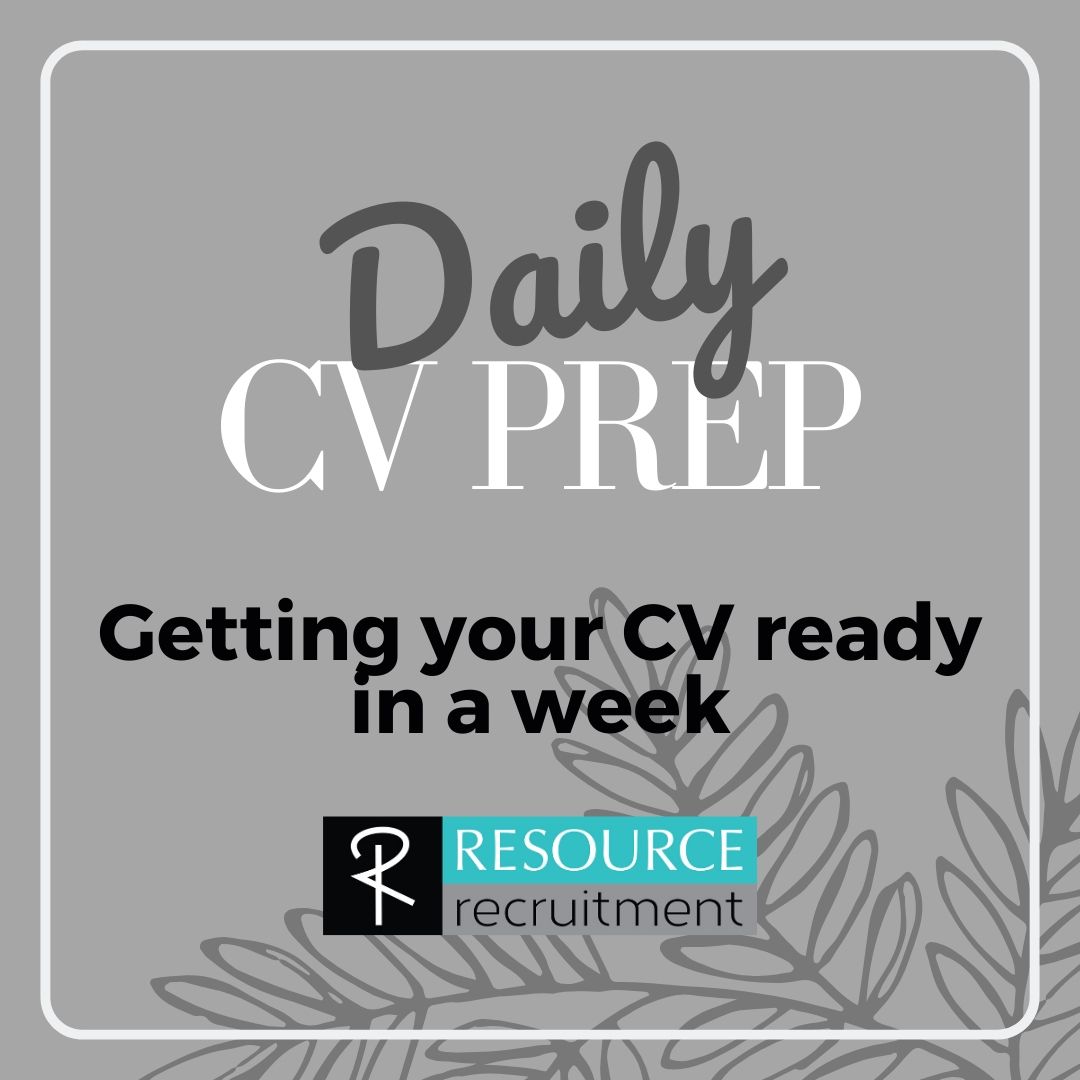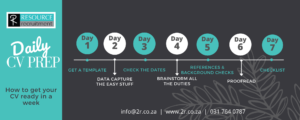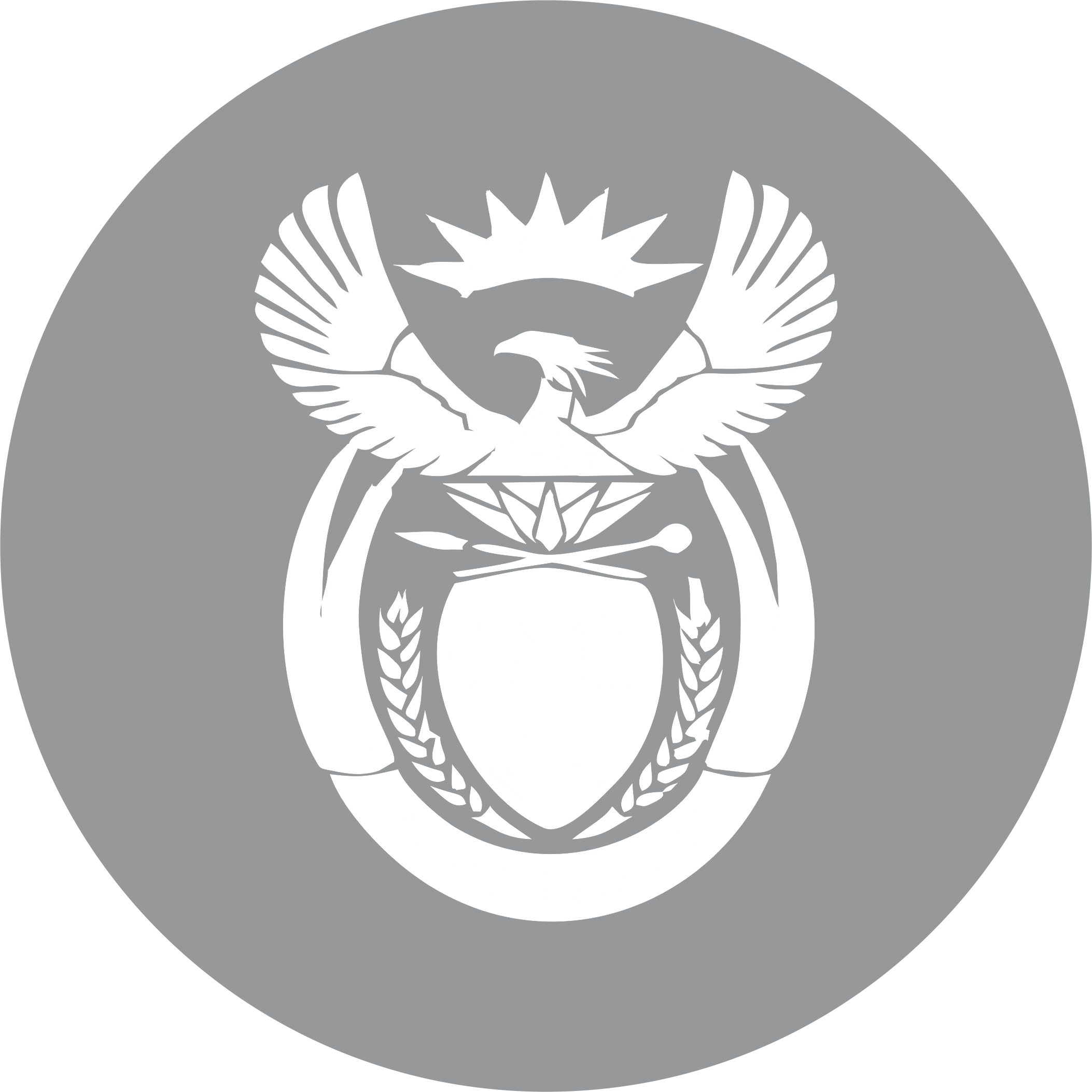
11 May Daily Guide to Preparing your CV

Are you in the situation where you need to get your CV together and start applying for jobs, but you don’t know where to start and are procrastinating and doing everything else? Are you worried that the people in your life think that you are lazy, but in reality, you are just overwhelmed? Where do you even begin to put together a CV, and tackle such an important task as finding a job?
Easy- one day at a time!
We have broken down this overwhelming task, into seven easy, manageable steps. Don’t overthink it, just start putting your CV together today!
Day One: Get a template
Start with a fresh new template. Keep it simple and professional. It does not have to be 2 pages, a 4-5-page CV is quite acceptable. It’s important that your template has enough space to include all your duties and experience, rather than just look pretty. Visit our website to download our free CV template, or have a look at the templates in MS Word and CANVA
Day Two: Data Capture the Easy Stuff
It’s a big scary blank document, so start by just data capturing the easy stuff such as your personal details, computer systems worked on, educational details and an overview of the companies you have worked for, with the most recent first. By the time you are finished with the easy stuff, it won’t seem so overwhelming to fill in the blanks!
Day Three: Check the dates
You are going to be asked what dates you worked for at your different companies and these dates will need to correspond with your reference, LinkedIn profiles and your reasons for leaving. So, you might as well take a few minutes now to make sure they are in your CV and that they are all correct.
Day Four: Brainstorm all the duties
In the olden days, you had a two-page CV because job applications were faxed. Today you upload them onto job portals and these CV’s are shortlisted by being “searched” for with keywords. To ensure that your CV appears in these searches you have to make sure that you list all your relevant duties. If it’s not on your CV- you never did it, and you won’t be shortlisted for the job. If you don’t have a job description or a list of duties, start by brainstorming what a typical day was like. Jot down the information in point form and put as much information down as you can. You can always go back and group and edit duties. Don’t assume that everyone knows what you do and where possible avoid using abbreviations.
Day Five: References & Background checks
Once you send your CV off a lot of companies will proceed with reference checks and background checks. Put the managers that you would like contacted with the company details as well as their contact numbers on your CV. It is also a good idea to let them know that you are putting them down as a reference. At this point, you will also want to check your privacy settings on your social media accounts and make sure that your LinkedIn profile, mirrors your CV.
Day Six: Proofread
You should be trying to impress with your CV, so it should be an example of the best work that you can produce. If it is littered with spelling and grammar errors, it won’t make a good impression. Ask someone to read it over and check for mistakes. However, be careful of giving it to someone who wants to appear as professional and give unwanted advice.
Day Seven: Checklist
Make sure that your CV has the following: Your contact telephone number; Email address; The area and region that you live and can work; If you have your drivers licence and own car; How soon you can start a new position; Your ID number; And what computer packages you have worked on.
Your CV is a constantly developing portfolio of your experience, and as such, should never be a final copy. Once you have a CV, start sending it out and applying for jobs. As you get feedback from recruiters or realize that something is missing, alter and update it.



